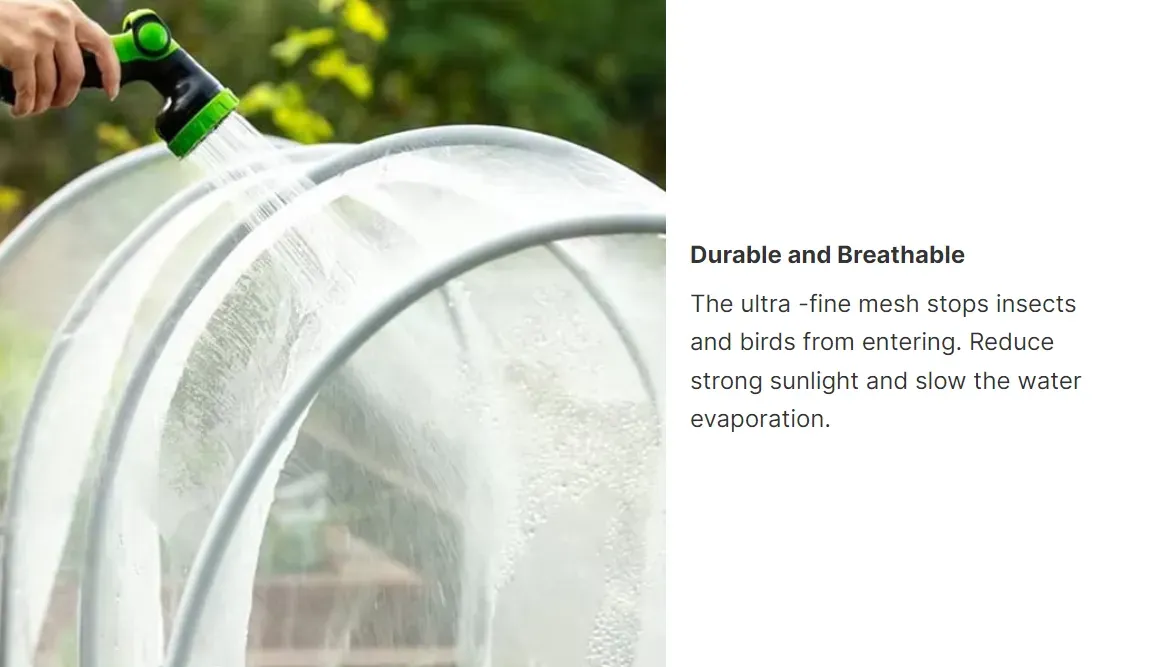Vine Netting Solutions for Effective Plant Support and Growth Optimization
The Benefits and Applications of Vine Netting in Agriculture
Vine netting, a specialized netting used in agricultural practices, has gained popularity among farmers and horticulturists for its various benefits in vine-supported crops. This netting technology is primarily designed to protect plants, ensure optimal growth, and improve the quality of the harvest. In this article, we will explore the significance of vine netting, its advantages, and its applications in modern farming.
What Is Vine Netting?
Vine netting is a mesh material typically made of durable polyethylene or nylon that is used to support climbing plants, such as grapes, tomatoes, cucumbers, and various types of vines. This netting comes in various sizes and mesh patterns to accommodate different types of crops and growth conditions. Farmers and gardeners install vine netting to provide physical support for the plants, facilitating better growth and access to sunlight.
Advantages of Using Vine Netting
1. Enhanced Support for Climbing Plants Vine netting provides a sturdy support system for climbing plants. As these plants grow, they can latch onto the netting, allowing them to reach more sunlight and reducing the risk of them collapsing under their weight. This support is crucial for maintaining the plant's structure, especially in varieties like grapevines, which can become quite heavy as they bear fruit.
2. Improved Air Circulation By keeping plants elevated and well-spaced, vine netting promotes better airflow around the foliage. This increased circulation minimizes humidity levels, thereby reducing the likelihood of fungal diseases and pests. Healthier plants translate to higher yields and better quality produce.
3. Efficient Harvesting When crops grow vertically with the help of vine netting, they become easier to harvest. Farmers can access the fruits without squatting or crawling on the ground, thus saving time and energy. This efficiency is particularly beneficial during peak harvest seasons when manpower may be limited.
vine netting

4. Space Optimization Vine netting allows farmers to utilize vertical space effectively. By training plants to grow upwards, growers can maximize their crop yield within a limited area, making it especially advantageous for urban farming or small-scale operations.
5. Protection from Pests and Debris Vine netting can act as a physical barrier against pests and falling debris. It helps to keep fruits clean and reduces the risk of damage from insects or animals, which often lead to significant losses in crop production.
Applications in Modern Farming
Vine netting is widely used in various agricultural scenarios. In vineyards, for instance, it not only supports grapevines but also allows for better sun exposure and air circulation, which are vital for grape quality and flavor. In vegetable gardens, tomato plants benefit immensely from vine netting, as it helps them grow tall while keeping the fruit off the ground, minimizing rot and pest issues.
Moreover, vine netting has applications in landscaping and gardening, where it is used to create trellises and supports for ornamental climbing plants. Home gardeners have also embraced vine netting in smaller applications, aiding in the growth of cucumbers and beans, while creating a visually appealing structure in their gardens.
Conclusion
In conclusion, vine netting is an invaluable tool in modern agriculture, providing a multitude of benefits for both commercial farmers and home gardeners alike. By enhancing support, improving air circulation, enabling efficient harvesting, optimizing space, and protecting crops, vine netting significantly contributes to increased productivity and better quality yields. As sustainable agriculture continues to be a priority, the role of vine netting in promoting healthier plants and more efficient farming practices will undoubtedly continue to grow. Whether you are a seasoned farmer or a budding gardener, incorporating vine netting into your horticultural practices can lead to fruitful results in more ways than one.
-
The Versatility of Stainless Steel Wire MeshNewsNov.01,2024
-
The Role and Types of Sun Shade SolutionsNewsNov.01,2024
-
Safeguard Your Space with Effective Bird Protection SolutionsNewsNov.01,2024
-
Protect Your Garden with Innovative Insect-Proof SolutionsNewsNov.01,2024
-
Innovative Solutions for Construction NeedsNewsNov.01,2024
-
Effective Bird Control Solutions for Every NeedNewsNov.01,2024












